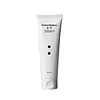What's inside
What's inside
 Key Ingredients
Key Ingredients

 Benefits
Benefits

 Concerns
Concerns

 Ingredients Side-by-side
Ingredients Side-by-side

Ethylhexyl Palmitate
EmollientTriethylhexanoin
MaskingGlycerin
HumectantCoco-Caprylate/Caprate
EmollientWater
Skin ConditioningPolyglyceryl-10 Myristate
Skin ConditioningKaolin
AbrasiveCaprylic/Capric Triglyceride
MaskingCentella Asiatica Extract
CleansingLaminaria Japonica Extract
Skin ProtectingEclipta Prostrata Leaf Extract
Skin ConditioningElaeis Guineensis Oil
EmollientSodium Hyaluronate
HumectantHydrogenated Lecithin
EmulsifyingSucrose Stearate
EmollientSucrose Laurate
EmollientSucrose Myristate
EmollientPentaerythrityl Tetra-Di-T-Butyl Hydroxyhydrocinnamate
AntioxidantButylene Glycol
HumectantHydrolyzed Hyaluronic Acid
HumectantDimethylsilanol Hyaluronate
HumectantDipropylene Glycol
HumectantHydrolyzed Sodium Hyaluronate
Skin ConditioningPotassium Hyaluronate
Skin ConditioningHyaluronic Acid
HumectantSodium Hyaluronate Crosspolymer
HumectantHydroxypropyltrimonium Hyaluronate
Sodium Hyaluronate Dimethylsilanol
HumectantSodium Acetylated Hyaluronate
HumectantFructooligosaccharides
HumectantBeta-Glucan
Skin Conditioning1,2-Hexanediol
Skin ConditioningEthylhexyl Palmitate, Triethylhexanoin, Glycerin, Coco-Caprylate/Caprate, Water, Polyglyceryl-10 Myristate, Kaolin, Caprylic/Capric Triglyceride, Centella Asiatica Extract, Laminaria Japonica Extract, Eclipta Prostrata Leaf Extract, Elaeis Guineensis Oil, Sodium Hyaluronate, Hydrogenated Lecithin, Sucrose Stearate, Sucrose Laurate, Sucrose Myristate, Pentaerythrityl Tetra-Di-T-Butyl Hydroxyhydrocinnamate, Butylene Glycol, Hydrolyzed Hyaluronic Acid, Dimethylsilanol Hyaluronate, Dipropylene Glycol, Hydrolyzed Sodium Hyaluronate, Potassium Hyaluronate, Hyaluronic Acid, Sodium Hyaluronate Crosspolymer, Hydroxypropyltrimonium Hyaluronate, Sodium Hyaluronate Dimethylsilanol, Sodium Acetylated Hyaluronate, Fructooligosaccharides, Beta-Glucan, 1,2-Hexanediol
Helianthus Annuus Seed Oil
EmollientBehenyl Alcohol
EmollientCaprylic/Capric Triglyceride
MaskingOryza Sativa Bran Wax
Skin ConditioningPolyglyceryl-2 Caprate
EmulsifyingMoringa Oleifera Seed Oil
EmollientGlyceryl Stearate
EmollientPolyhydroxystearic Acid
EmulsifyingTribehenin
EmollientTremella Fuciformis Sporocarp Extract
AntioxidantLauryl Glucoside
CleansingPolyglyceryl-2 Sesquioleate
EmulsifyingSilica
AbrasiveGlyceryl Behenate
EmollientRosa Canina Fruit Oil
EmollientChenopodium Quinoa Seed Oil
EmollientGlycerin
HumectantLimnanthes Alba Seed Oil
Skin ConditioningSodium Hyaluronate
HumectantRosa Centifolia Flower Extract
AstringentParfum
MaskingHelianthus Annuus Seed Oil, Behenyl Alcohol, Caprylic/Capric Triglyceride, Oryza Sativa Bran Wax, Polyglyceryl-2 Caprate, Moringa Oleifera Seed Oil, Glyceryl Stearate, Polyhydroxystearic Acid, Tribehenin, Tremella Fuciformis Sporocarp Extract, Lauryl Glucoside, Polyglyceryl-2 Sesquioleate, Silica, Glyceryl Behenate, Rosa Canina Fruit Oil, Chenopodium Quinoa Seed Oil, Glycerin, Limnanthes Alba Seed Oil, Sodium Hyaluronate, Rosa Centifolia Flower Extract, Parfum
 Reviews
Reviews

Ingredients Explained
These ingredients are found in both products.
Ingredients higher up in an ingredient list are typically present in a larger amount.
This ingredient is an emollient, solvent, and texture enhancer. It is considered a skin-softener by helping the skin prevent moisture loss.
It helps thicken a product's formula and makes it easier to spread by dissolving clumping compounds.
Caprylic Triglyceride is made by combining glycerin with coconut oil, forming a clear liquid.
While there is an assumption Caprylic Triglyceride can clog pores due to it being derived from coconut oil, there is no research supporting this.
Learn more about Caprylic/Capric TriglycerideGlycerin is already naturally found in your skin. It helps moisturize and protect your skin.
A study from 2016 found glycerin to be more effective as a humectant than AHAs and hyaluronic acid.
As a humectant, it helps the skin stay hydrated by pulling moisture to your skin. The low molecular weight of glycerin allows it to pull moisture into the deeper layers of your skin.
Hydrated skin improves your skin barrier; Your skin barrier helps protect against irritants and bacteria.
Glycerin has also been found to have antimicrobial and antiviral properties. Due to these properties, glycerin is often used in wound and burn treatments.
In cosmetics, glycerin is usually derived from plants such as soybean or palm. However, it can also be sourced from animals, such as tallow or animal fat.
This ingredient is organic, colorless, odorless, and non-toxic.
Glycerin is the name for this ingredient in American English. British English uses Glycerol/Glycerine.
Learn more about GlycerinSodium Hyaluronate is hyaluronic acid's salt form. It is commonly derived from the sodium salt of hyaluronic acid.
Like hyaluronic acid, it is great at holding water and acts as a humectant. This makes it a great skin hydrating ingredient.
Sodium Hyaluronate is naturally occurring in our bodies and is mostly found in eye fluid and joints.
These are some other common types of Hyaluronic Acid:
Learn more about Sodium Hyaluronate